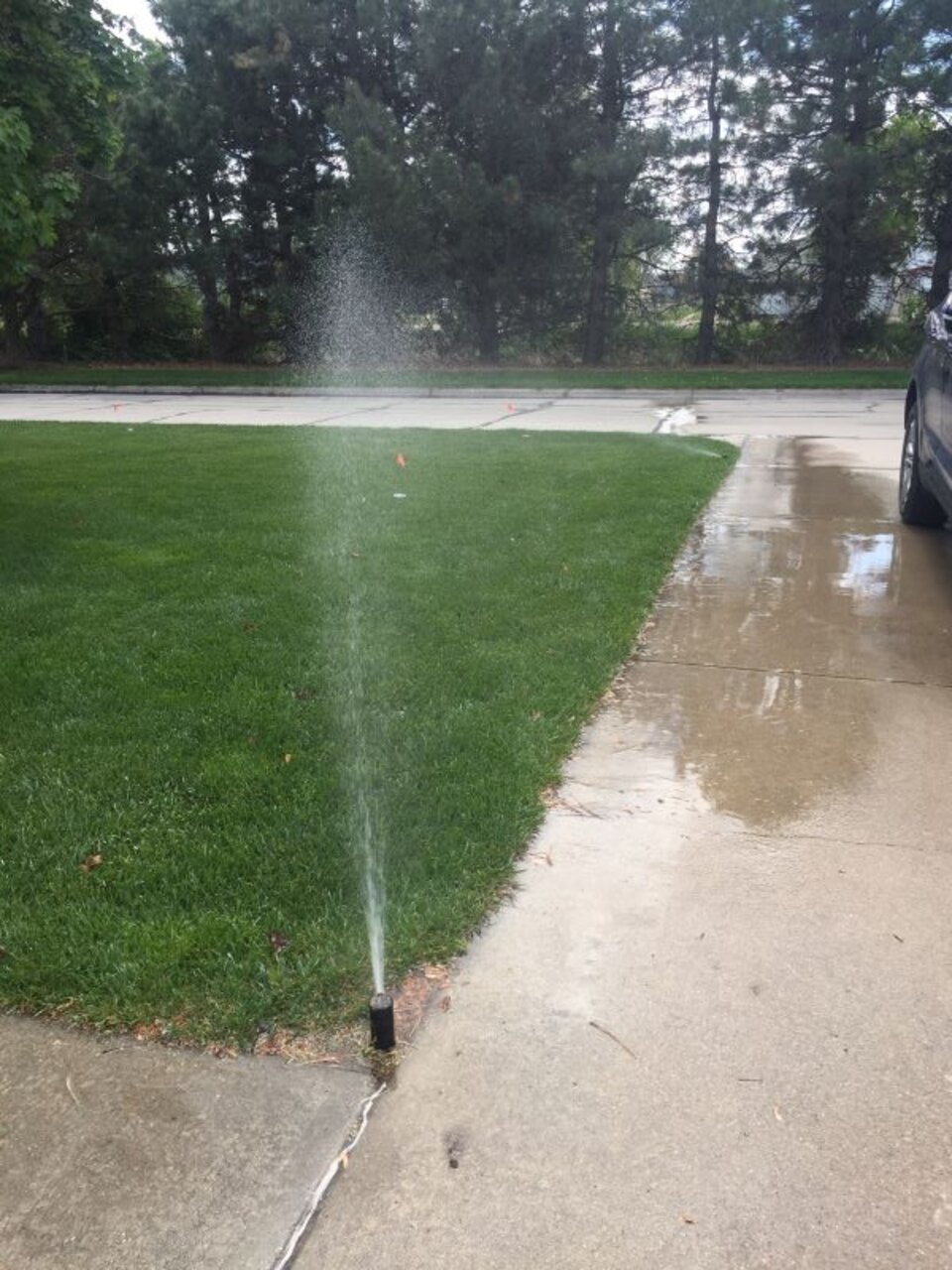Avoid "Set it and Forget it" With Turf Irrigation Systems

With automatic turf irrigation, it is not unusual for the system to be turned on and left on for most of the summer. This practice often leads to water waste and incorrectly watered lawns. The best setting for automatic irrigation systems is manual, allowing property owners to choose to irrigate when plants need water.
For turfgrass, maintaining a moist soil to a depth of 4 to 6 inches is better than maintaining a continuously wet soil to a depth of a 2 to 3 of inches. Allowing soil to dry briefly between irrigation has benefits, such as recharging soil oxygen that plant roots need as much as water to grow and function well.
Nebraska Extension recommends leaving automatic irrigation systems turned off until turfgrass shows signs of needing moisture or a check of the soil indicates irrigation is needed. When needed, the goal should be to moisten soil to the depth of the plants root zone, then wait until soil dries to water again.
Historic recommendations in Nebraska have been to provide turfgrass with 1 to 1½ inches of water per week from rainfall and/or irrigation. However, each type of turfgrass has different requirements and responds differently to dry periods. Landscapes have different soil types, levels of shade or slope and wind exposure. Weather conditions affecting plant water use change from week to week.
Using a “one irrigation schedule fits all” approach does not take into account turfgrass, site and weather differences. Field research also indicate most established landscape plants perform acceptably with 20 to 40 percent less irrigation.
The most common turfgrasses grown in Nebraska are Kentucky bluegrass (KBG) and tall fescue. As cool season grasses, they green up early in spring and go dormant in late fall, growing best during cooler spring and fall weather. They require summer irrigation to maintain green color.
KBG has shallower roots than tall fescue and will slow growth and discolor if water is limited. However, during dry periods it has the physiological ability to go dormant (turn off-color but still be alive) to escape drought. With most property owners not being tolerant of a dormant summer lawn, KBG requires more frequent irrigation than tall fescue due to shallow roots and lesser heat tolerance.
Tall fescue tolerates dry periods better than KBG due to a deeper root system that uses moisture deeper in the soil. However, it does not have the physiological ability to go dormant to avoid dying from drought. If tall fescue begins to turn off color from a lack of water, it requires irrigation.
While tall fescue uses more moisture due to deeper roots, it is considered a turfgrass to plant to help conserve water because it requires less frequent irrigation in central and eastern Nebraska. Unfortunately, tall fescue is often irrigated the same as KBG with the “set it and forget it” method.
If automatic irrigation systems are left off, how does one know when to turn them on? Watch for signs of turf needing irrigation or check the soil with a screwdriver or trowel.
Signs of water stress include turfgrass developing a darker bluish-brown color, leaf blades rolling and footprints or wheel tracks remaining in the lawn after it is walked on or mowed. If the soil feels dry and does not smear on fingers, moisture is needed. If it feels moist and smears on fingers when rubbed, irrigation is likely not needed.
When watering, a deep irrigation is recommended. For turfgrass, this means wetting the soil to a depth of 4 to 6 inches without water running off into the street or nearby areas. Inserting a screwdriver into the soil can aid in determining depth. In clay soils or on slopes, use start and stop irrigation to allow infiltration or water two days in a row to moisten the soil to the correct depth without watering running off.
This article was reviewed by John Fech